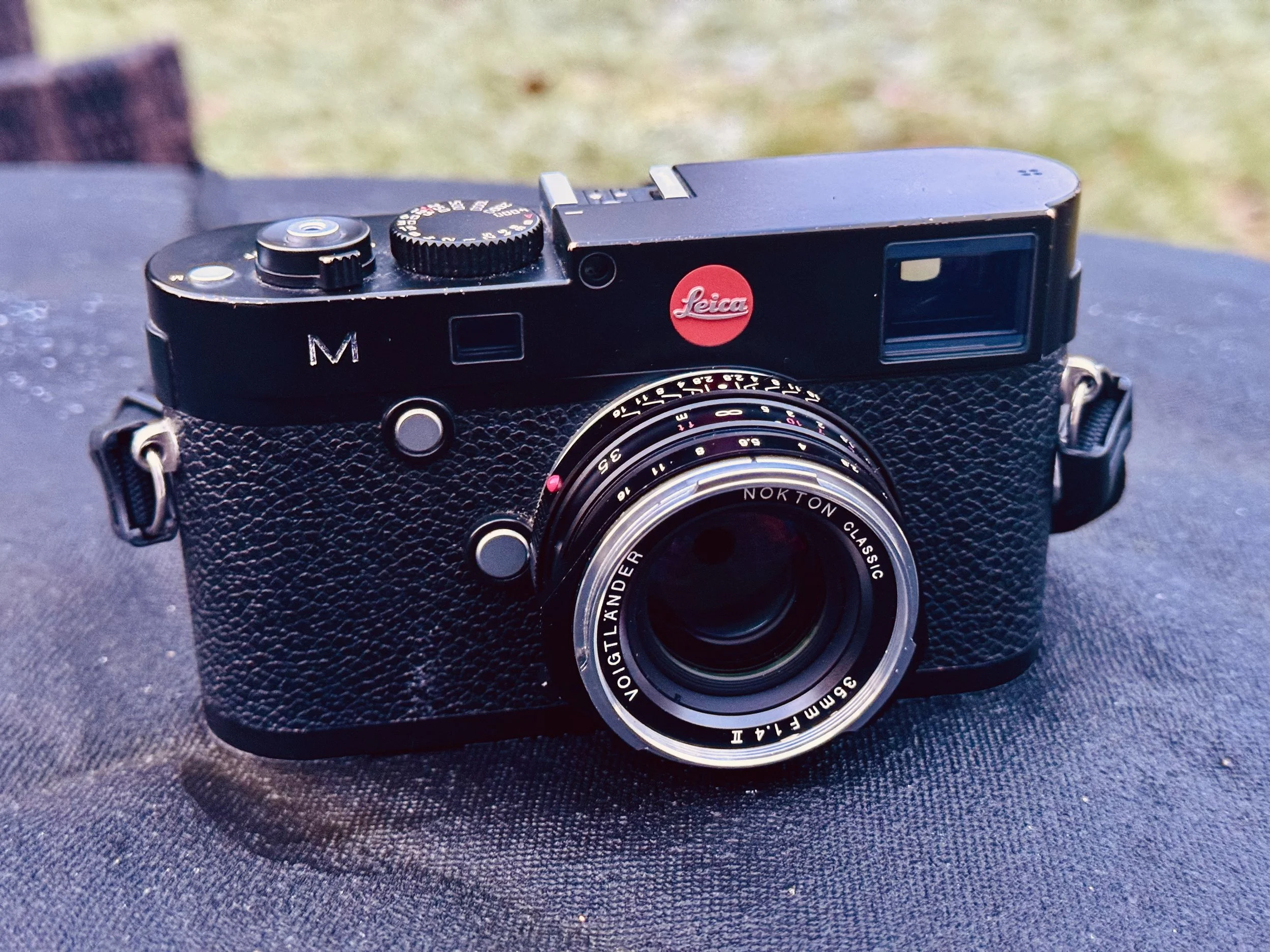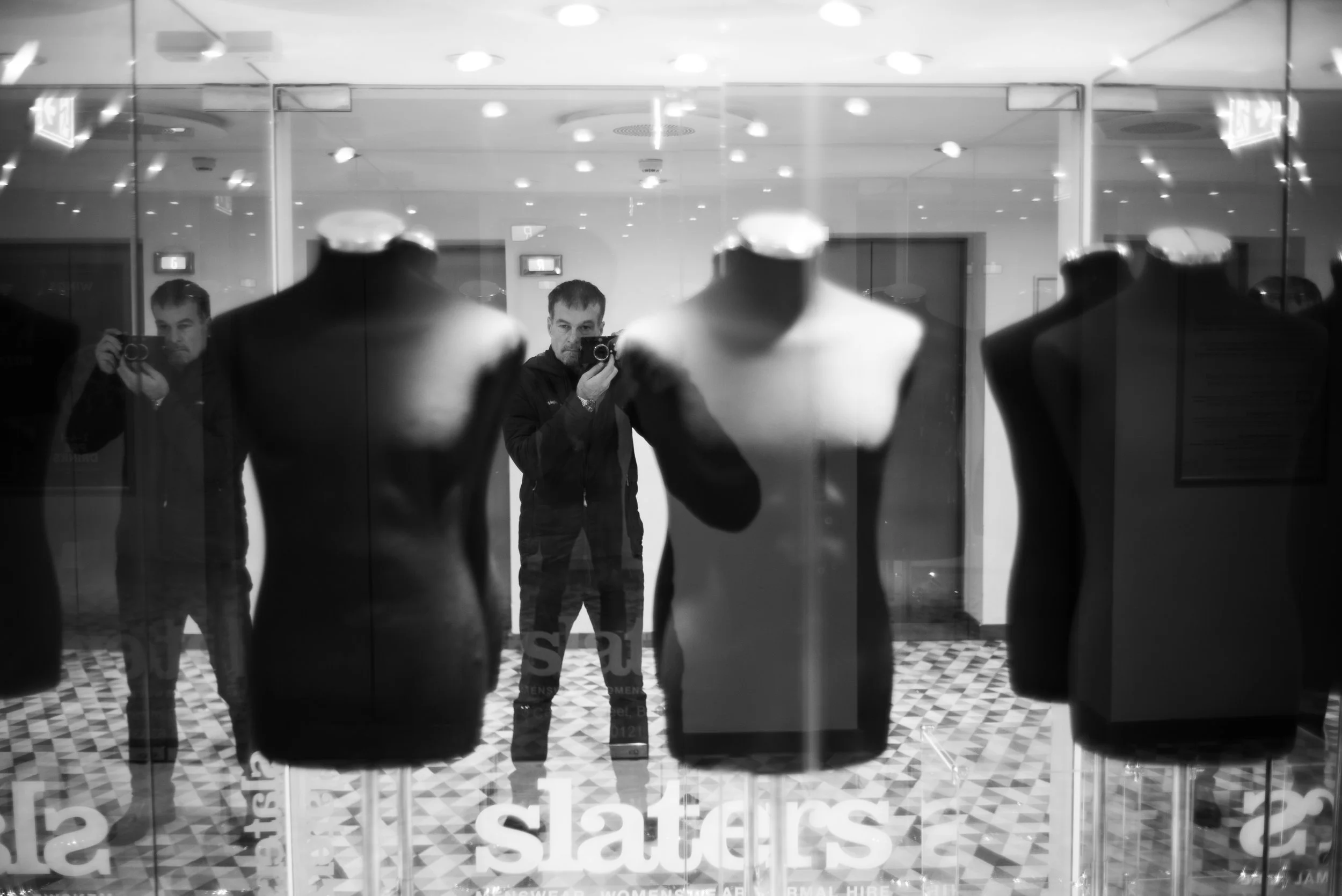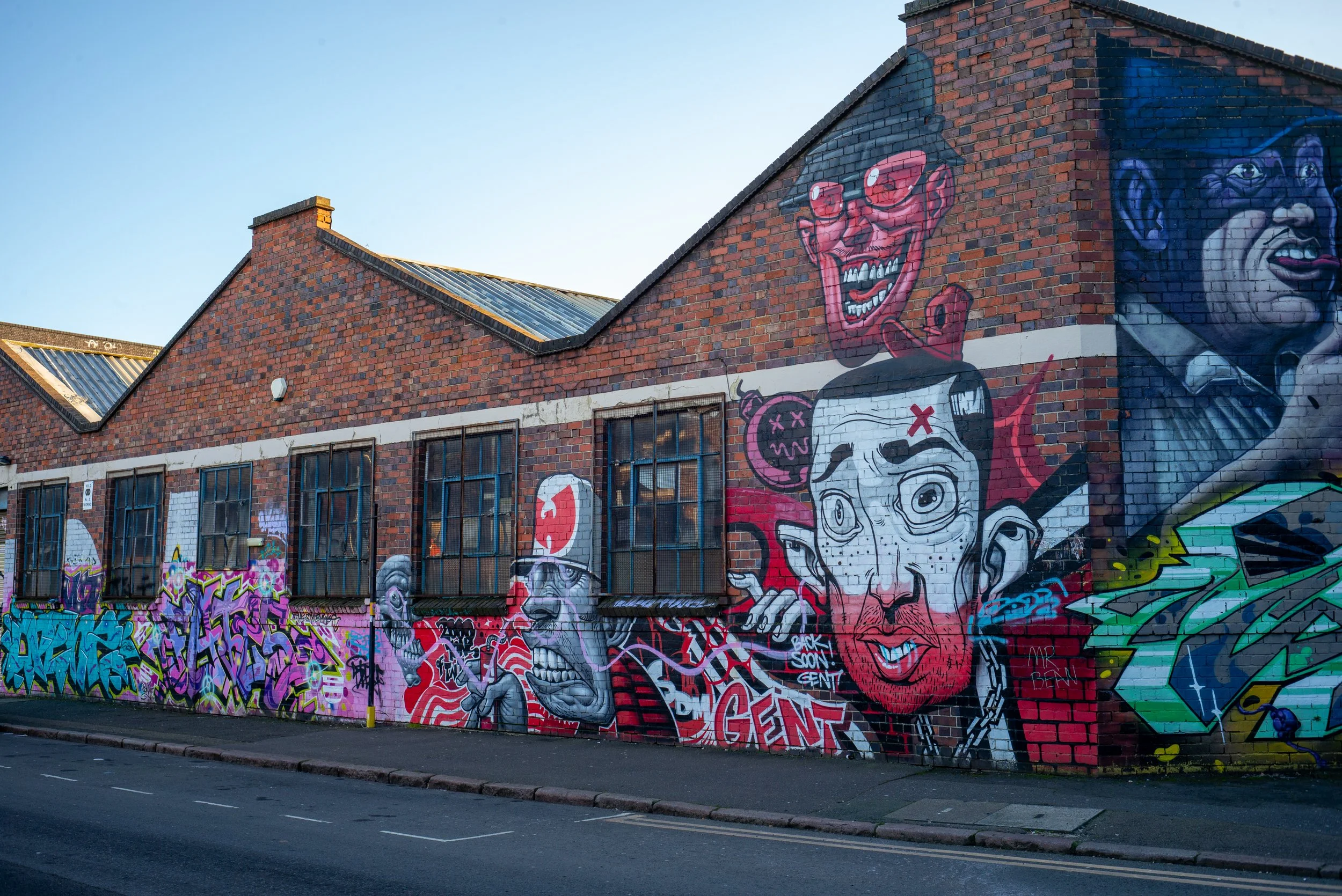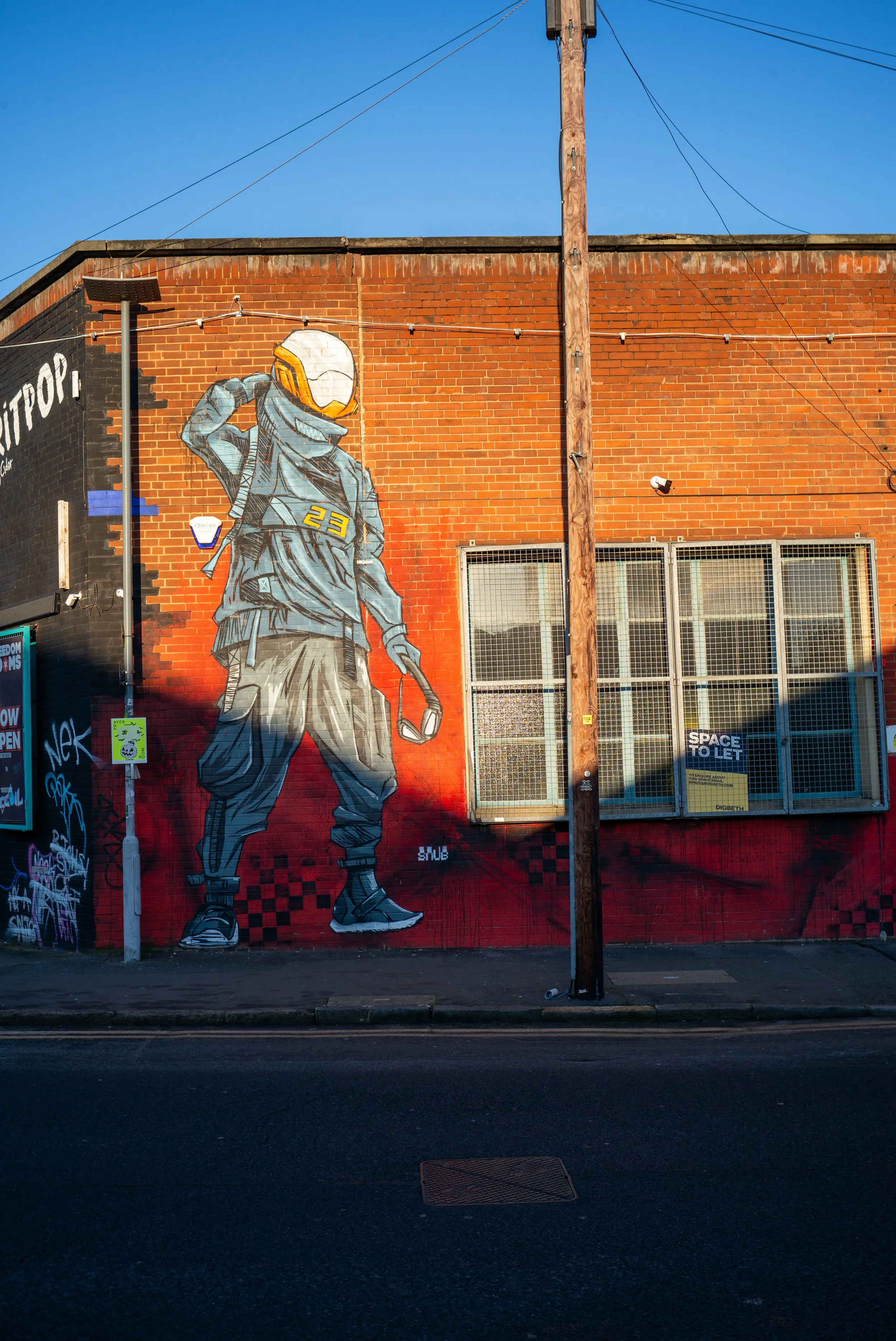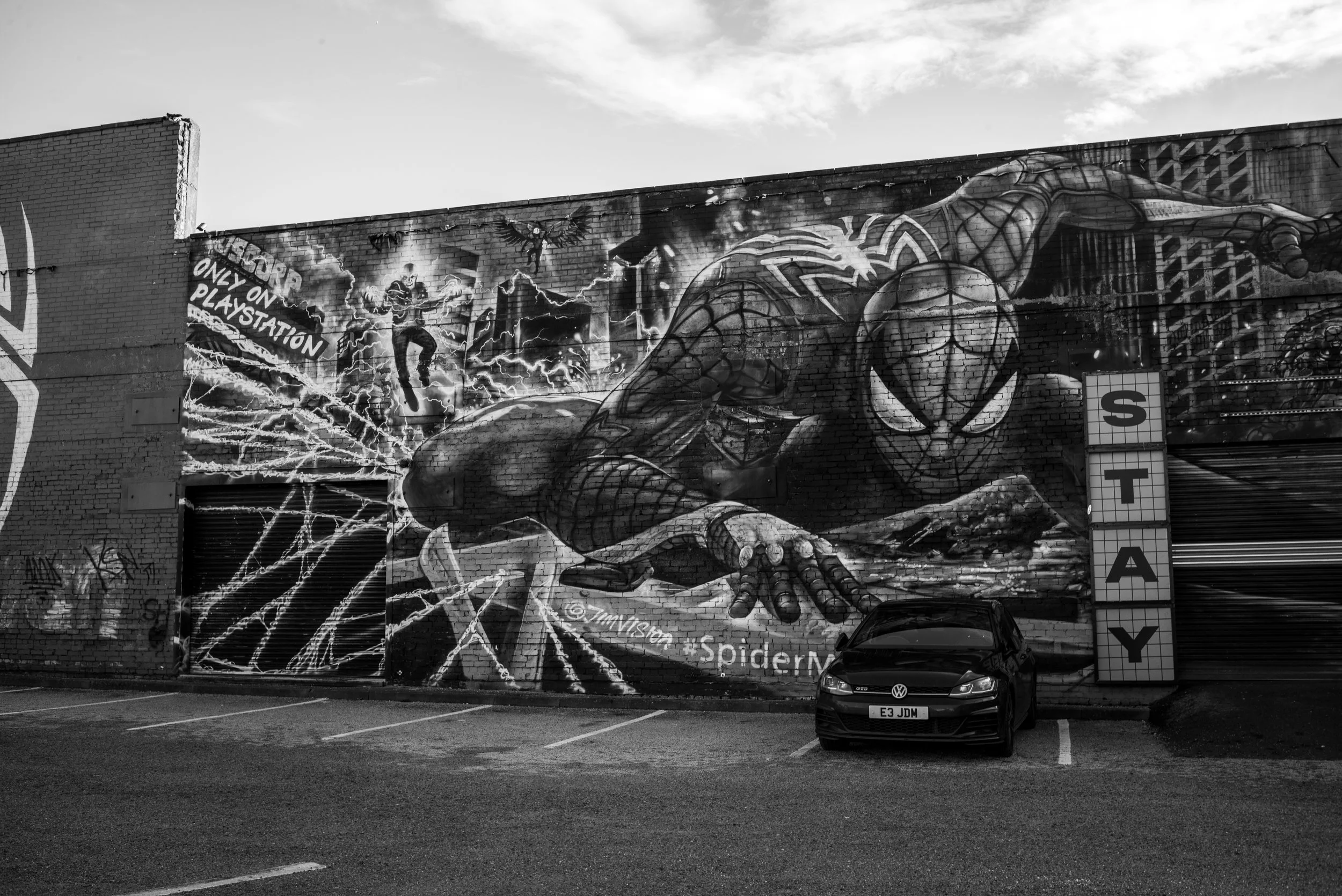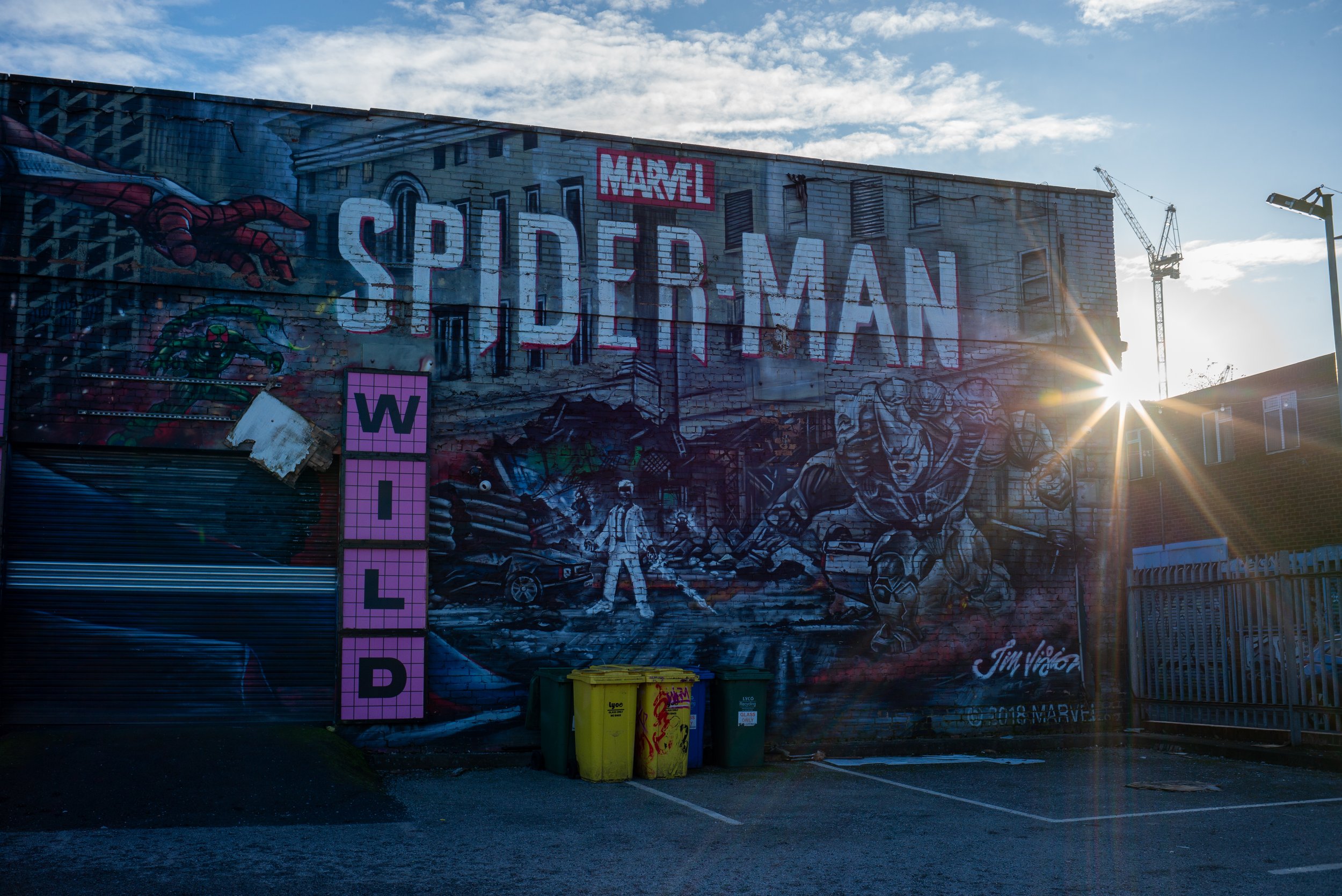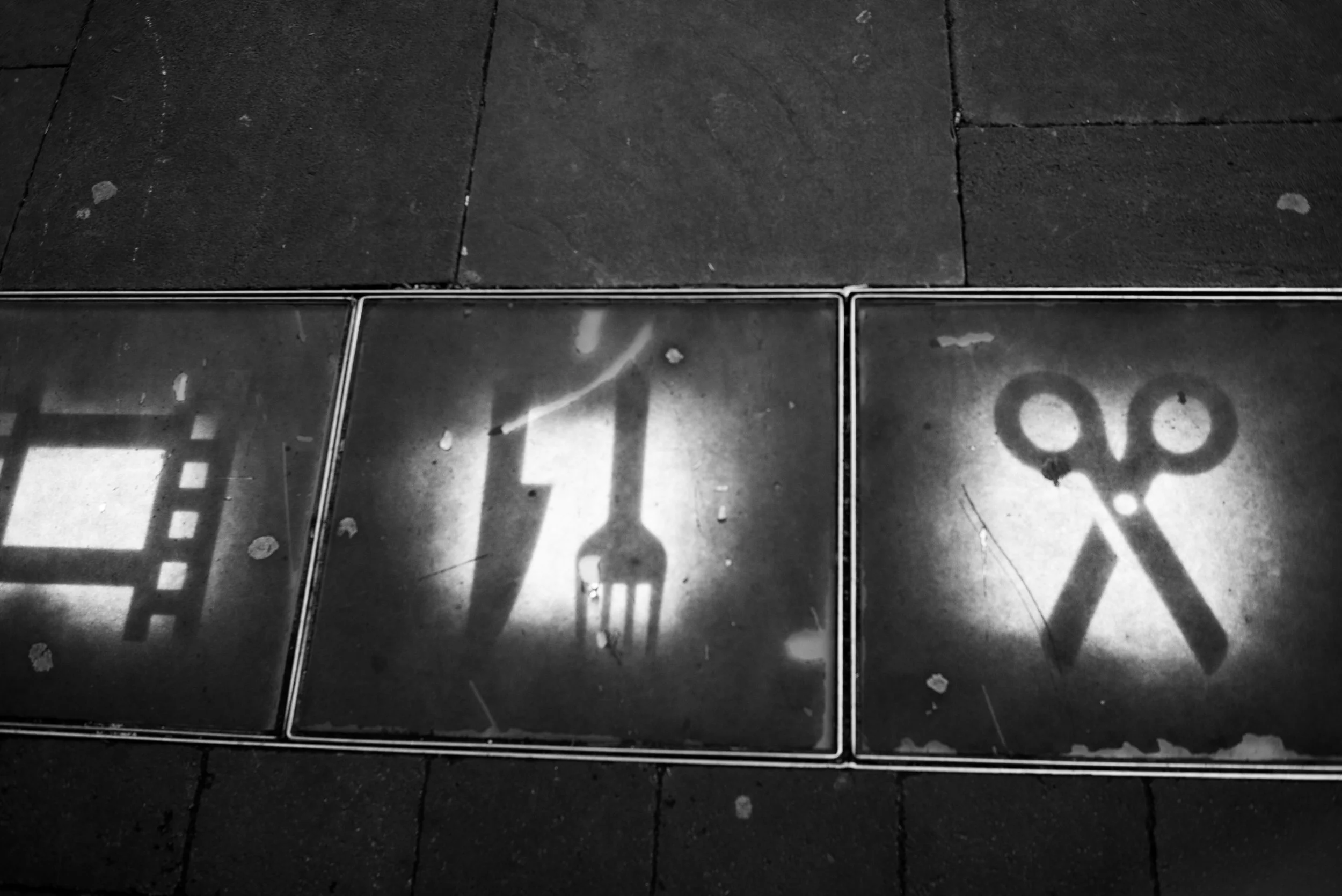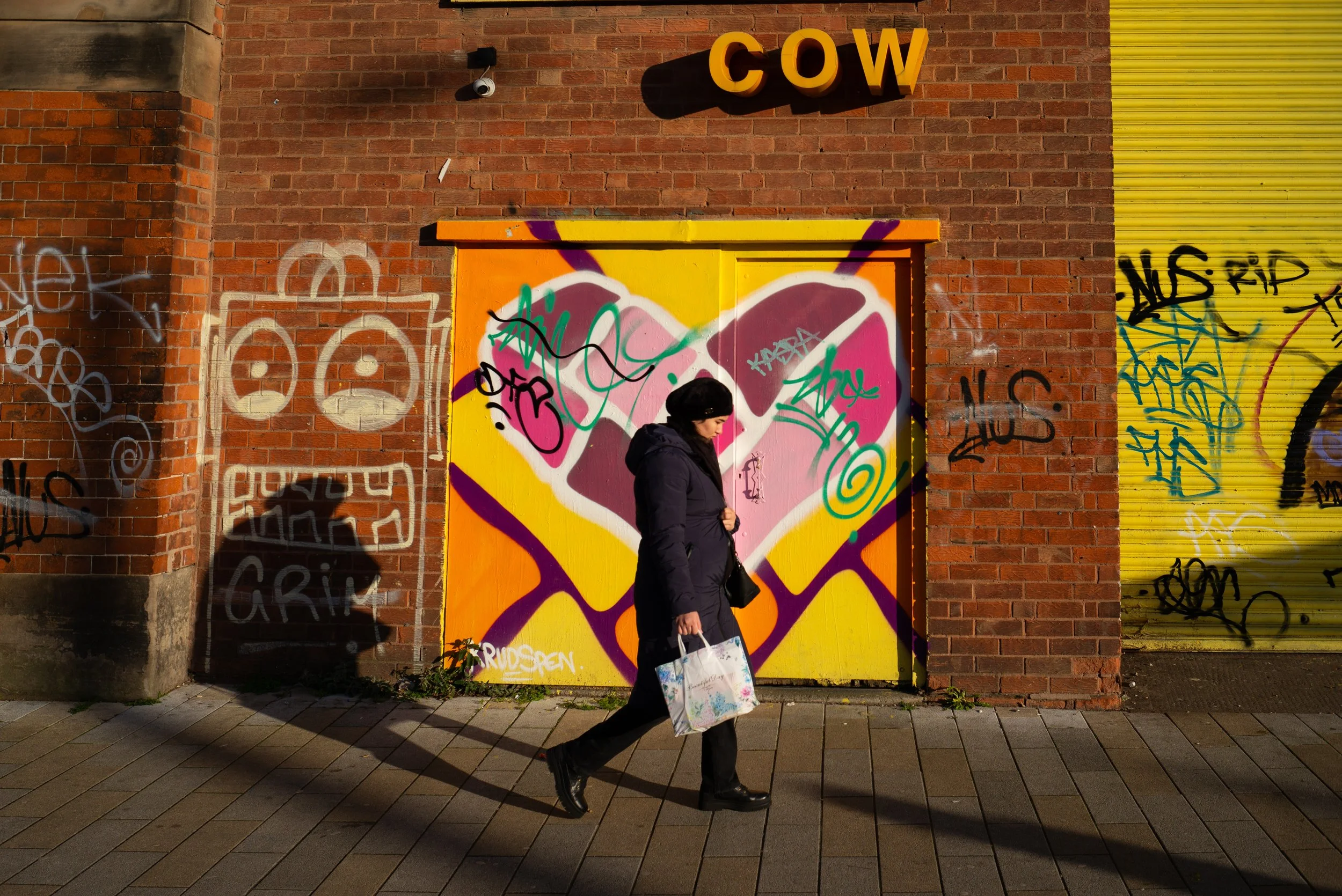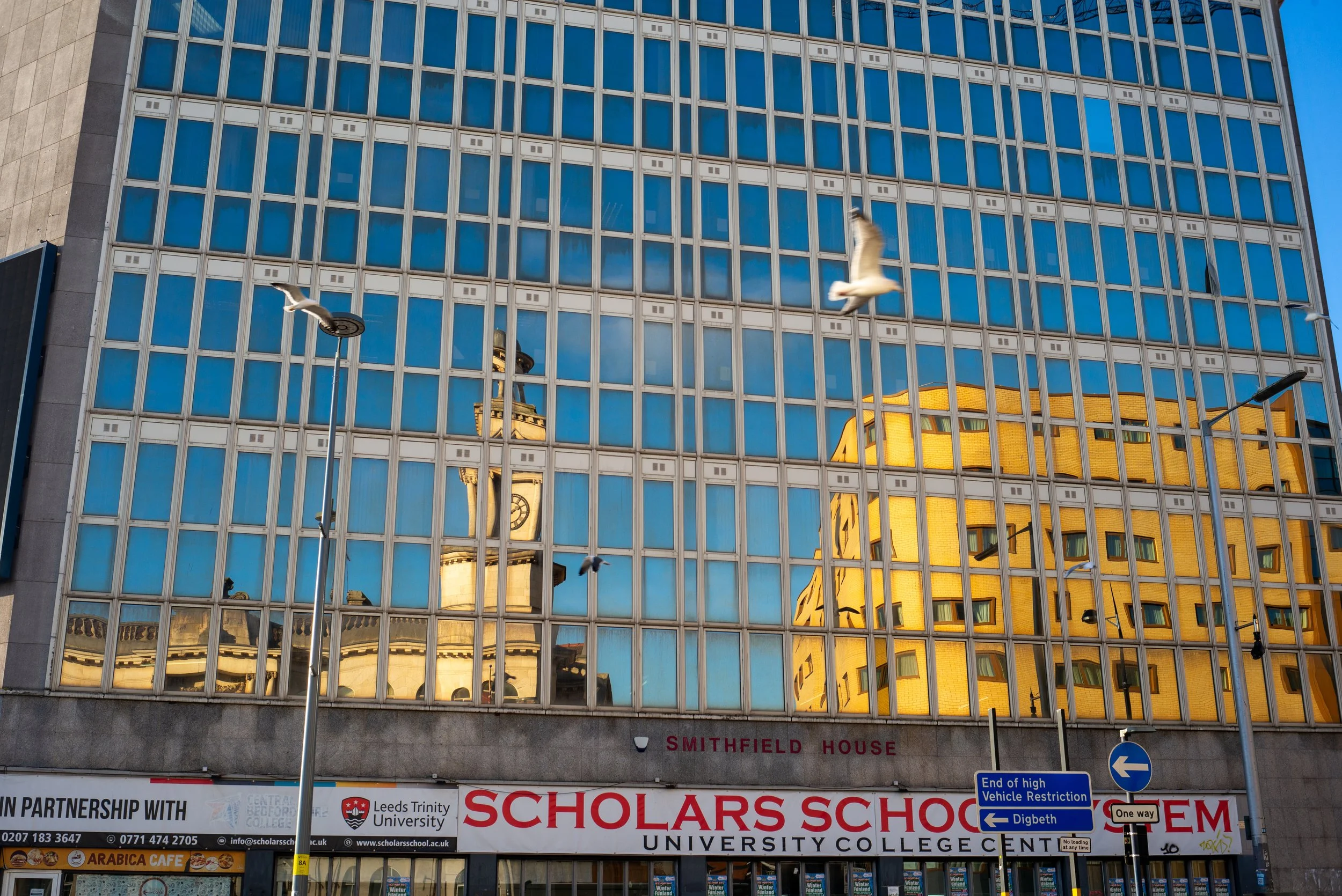My new Leica M (Typ 240)
Well it’s new to me anyway!
Many moons ago when film cameras were the only choice you had I lusted after a Leica rangefinder. I remember bumping into an old gentleman at the Moma museum in New York who had an M6. At that time I was using an Olympus OM1, a mighty fine camera in its one right but I fell in love with his all black M6.
I nearly bought one, at that time they were still an expensive item new but you could pick up used ones for a relatively “affordable” price.
Jump forward to now and I’ve come to the conclusion that what appeals to be about my film cameras is not necessarily they use film and the artistic (or not) merit in that but that they are pretty simple beasts with very few buttons.
You have ISO but only fiddle with that when loading a new roll. Then aperture on the ring, shutter somewhere up top and some form of lining up required in the viewfinder for exposure and focusing.
That’s it!
This thing is built like a tank. It’s much heaftier than you expect when you pick it up but you do get used to it quite quickly.
Modern digital cameras are so far removed from that. In fact with the many pages of menu options I find I waste so much time fiddling with things that it takes me away from the actual part of being there and focusing on making images.
I might not be so grand to term it flow but I think you know what I mean.
I’ve found that they often get in the way of the process. Making things simpler and restrictive can often open up many more avenues of creativity.
Look at the lovely patina showing through. Embrace the Wabi Sabi!
However, you still need to buy and process the film. Which is becoming increasingly more expensive. I’ve managed to bring the procurement costs down significantly by only shooting black and white and processing at home.
But that’s not something you can do with a spare quarter of an hour. Plus there’s the scanning side of it, yes labs will do this as well as develop but that pushes the price even more stratospheric.
Which is why I have a bag full of undeveloped film and two crates of negatives to scan hidden away in my office.
One of the first images I took with the camera, had to be didn’t it!
So a simple camera with a decent digital sensor was what I needed.
But, there aren’t many of those available. Sony, Canon, Nikon, Fujifilm have great imaging sensors but have put on increasingly complex interfaces.
That pretty much left - Leica.
Now I love my photography and mechanical equipment, and have a selection of Swiss timepieces but I couldn’t at this stage justify the eye watering price of a new M.
So used it was but how far back?
M10 and M11’s are still commanding high prices used.
I liked the M8 but that was a bit too far back and was not full frame. If I’m going to be spending that much money I wanted something a step up from my Micro Four Thirds cameras.
M9 has a ticking time bomb of sensor failure so gave that a swerve.
A few obligitary selfies. Its a Leica right eye shooting and all that.
Which left the next one in line. The interestingly named M typ 240.
Leica marketing department was off on leave when they named that one. Luckily they saw the error of their ways and got back to a sensible nomenclature with the M10 and M11.
I needed a lens so after a good deal of research went for a Voigtlander 35mm 1.4 Norton Classic II.
As I’m pretty new to rangefinder focussing I wanted something that would be a bit more forgiving than 50mm, plus I’ve always liked that focal range. And as it wasn’t made by Leica wasn’t too outrageous on the price, even used.
Also, it had some character, something that I really wanted. I’m not fussed about that clinical sharpness that many pixel peepers strive for. Give me something that has an interesting look anyday.
1.4 was nice to have for low light, 3200 would be the limit for this which is good enough if you are used to film.
Male model!
So sold some of my old film equipment that I wasn’t using anymore and put that towards the cost of a used M 240 and lens from MPB.
I’ve set myself a challenge to stick to one lens for the year so let’s see how that goes.
I was going to only shoot monochrome, which I’m really pleased with the results but couldn’t give up those “Leica colours” for some images.
Lovely colours.
I’ve only had the camera a few days and the weather has been shocking so I’ve not had that much of an opportunity to test it out.
Luckily I was visiting Birmingham for a meeting and had an hour free early in the morning and the weather was glorious, although 4 degrees Celsius!
So here are a few that I took, a few selfies in the hotel in the evening and then mainly around the Custard Factory area of Digbeth.
The graffitti around here is very impressive.
The area is well known for its amazing Graffiti which as you can see I took quite a lot of images of.
This was in monochrome anyway so, but love the way this camera does black and white.
Squashed pigeon. Not sure what happened to the rest of it but it looks like a fallen angel.
Testing out how it handles contrasty situations.
Graffiti alley.
The bright sun was a great opportunity to test out how well the meter in the M 240 dealt with the high contrast environment.
If you just use the rangefinder then you only get centre weighted metering, which I’m very familiar with from my many years of film cameras. I read that the Leica is quite heavily weighted to the centre but didn’t find it that difficult to get to grips with.
Eat me.
You can also use spot and matrix but this causes a delay as the shutter curtain has to open for the sensor to take the reading and then capture the image. I didn’t bother with this as I like my cameras to be fast and have immediate results.
This is an amazing sculpture and huge.
Focusing with the rangefinder does take a bit of getting used to but you also have a fair bit of leeway if you shoot at 5.6 or 8 with a 35mm lens. You can use the back screen with LiveView but I found I needed to use my glasses with that plus the focus peaking that Leica implemented on this is no where near as prominent as my Panasonic MFT ones.
You are never going to be able to leave.
I made a conscious effort not to use the screen that much and to avoid chimping. I found this came pretty easy quickly as the camera lends itself to this style of shooting. Maybe I should have gone whole hog and got the Leica type 262 which doesn’t have a screen at all! Very film like.
Good control of flare and lovely sun stars.
I’m impressed with how much detail is available in the raw files. It managed this scene really well, great sun stars and also very minimal flaring for a classic style lens.
Backlight glass blocks in the pavement.
Were smart phones around when Diana was with us?
I’m sure she is a lovely person.
I had to get at least one image with a bird in it.
After a wander around Digbeth I stopped off for a coffee at one of my favourite cafes just opposite New Street station. The Faculty.
Cosey cafe.
I think she was sneaking a photo of me on the sly.
So for only an hour or so of shooting I’m really impressed with the results.
Also how the camera handles. It hones everything down to just the bare essentials of what you need to make images and leaves the photographer in charge of how they want the image to look like.
I found it slowed me down a bit but not enough that it got in the way and caused friction in getting the shot.
I really like that you can have Aperture Priority with Auto ISO for fast shooting or go full the other way and dial in shutter, aperture and desired ISO when you want to.
I should have got one much sooner!

